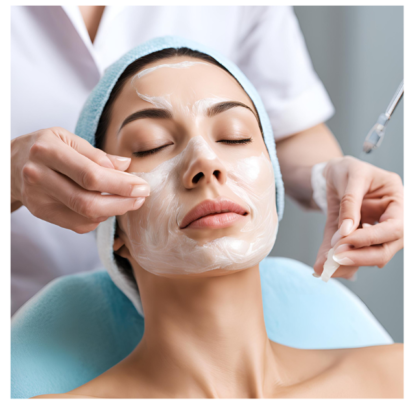Anti aging chemical peels come in a variety of types and strengths, but they’re all designed to refresh your skin by removing the outermost layers. By doing so, they pave the way for smoother, younger-looking skin from underneath. There are superficial, medium, and deep peels; each tailor-made to address specific skin concerns while offering a rejuvenating boost.
These peels tap into your skin’s natural ability to heal and renew itself. The process encourages the growth of new skin cells, which can significantly reduce fine lines, wrinkles, and other signs of aging. You might be curious why they’re so popular—it’s because the results often speak for themselves, offering a moderately invasive option that promises visible improvements.
There’s some skepticism out there, and it’s normal to have questions about whether chemical peels can actually roll back the clock on your skin’s appearance. The answer lies in understanding what these treatments are meant to do. They’re not a magic wand, but a scientifically grounded approach to enhancing skin texture, brightness, and firmness.
A lot of myths float around about chemical peels, how they work, and who they’re suitable for. It’s critical to sift through the information overload and understand that these treatments are versatile tools in anti-aging skincare, not miracle cures. Proper guidance and recommendations from skincare experts can play a pivotal role in achieving satisfactory results.
Choosing the Right Chemical Peel for Anti-Aging
Finding the perfect chemical peel requires a bit of know-how and a dash of expert advice. With various options like glycolic, lactic, and TCA peels, it can get overwhelming choosing which one might be your skin’s new best friend.
Different peels target different issues. So, while a glycolic peel is awesome for exfoliation and evening out skin tone, a TCA peel goes deeper to tackle more pronounced wrinkles and blemishes. Knowing your skin type and what it needs is crucial—and honestly, where a skincare professional comes in handy.
It’s not just about picking any peel labeled “anti-aging.” Specific formulations cater to different skin layers and concerns. Generally, deeper peels offer more intense results but come with a longer recovery time, whereas lighter peels are less invasive with quicker recovery.
Experts often stress the importance of an in-depth consultation before diving in. You should discuss your skin’s unique needs, potential allergies, and lifestyle factors with a qualified dermatologist. They can provide insights on which peel aligns best with your expectations and skin goals.
Adopting a good skincare routine post-treatment can amplify the benefits—a little goes a long way. From moisturizers to SPF, these become your skin’s best companions in preserving and optimizing the results of your chemical peel journey.
Efficacy of Anti-Aging Chemical Peels
When it comes to chemical peels, the million-dollar question is if they really make you look younger. The short answer? They can definitely help. These treatments are designed to enhance skin appearance by addressing common age signs like fine lines and dullness. There’s solid research backing their ability to stimulate collagen production, which plays a big role in keeping skin firm and youthful.
Many people who’ve tried chemical peels rave about noticeable differences in their skin’s texture and glow. It’s important to set realistic expectations, though. While you might not walk out looking a decade younger overnight, with consistent treatment, there’s often a visible improvement in skin quality.
So, what do dermatologists say? A good number support the use of peels for anti-aging because they’re a tried and tested method to address various skin concerns. They often recommend them as part of a comprehensive skincare strategy rather than a standalone miracle treatment.
Do anti-aging peels work for everyone? They have a pretty good track record, yet results can vary based on skin type, age, and lifestyle. It’s helpful to follow a professional’s guidance to tailor the process to fit your skin’s unique needs.
Some folks swear by the cumulative effect of regular peels, comparable to a gradual investment in your skin’s future health and appearance. The improvements, while sometimes subtle, can build over time, giving your skin a brighter, more rejuvenated look.
Potential Risks and Precautions
Chemical peels, like any cosmetic procedure, come with their set of risks. It’s super important to know what you’re getting into to make an informed decision. Common side effects might include redness, dryness, or a temporary change in skin tone, depending on the peel’s depth.
Deeper peels could potentially lead to more serious risks such as scarring or infection if not done correctly. That’s why it’s key to trust your skin only to certified professionals with ample experience in administering peels.
To reduce the odds of adverse effects, it’s advised to follow pre-peel instructions diligently. This might involve using prescribed skincare products or avoiding sun exposure. The aftercare is equally crucial to give your skin the support it needs to heal safely.
Having an open line of communication with your dermatologist is a game-changer. They can help tweak the treatment to fit your lifestyle and manage any concerns you might have along the way, offering peace of mind and keeping your skin’s health on top priority.
Remember, when it comes to your skin, patience and protection are your best allies. Armed with the right knowledge and professional guidance, you can safely explore chemical peels as a tool in your anti-aging arsenal while minimizing risks.

